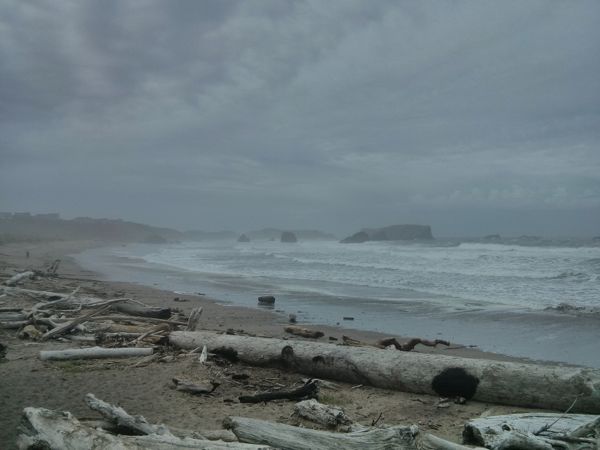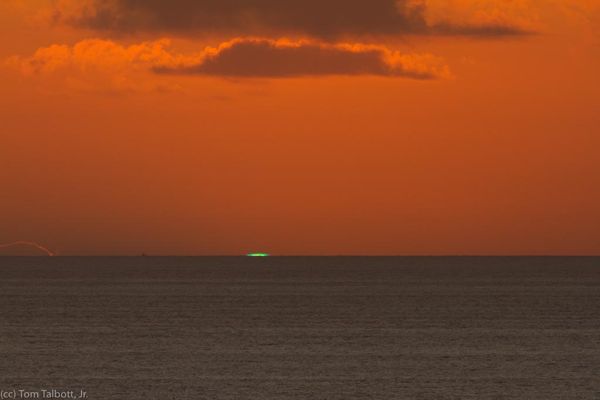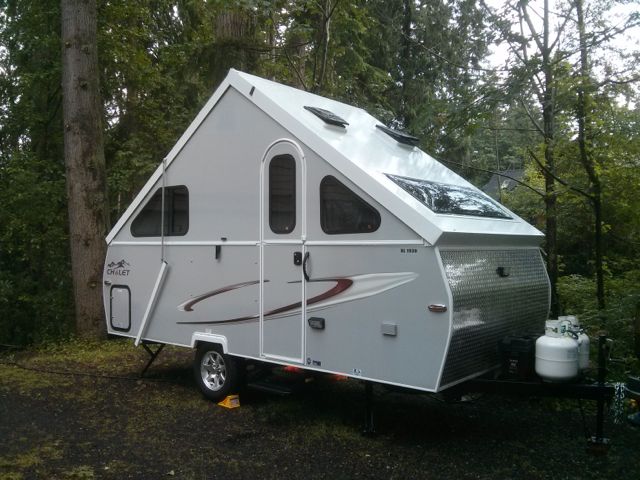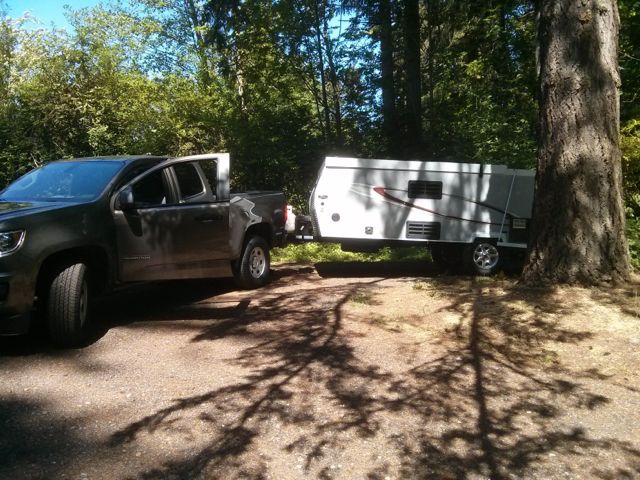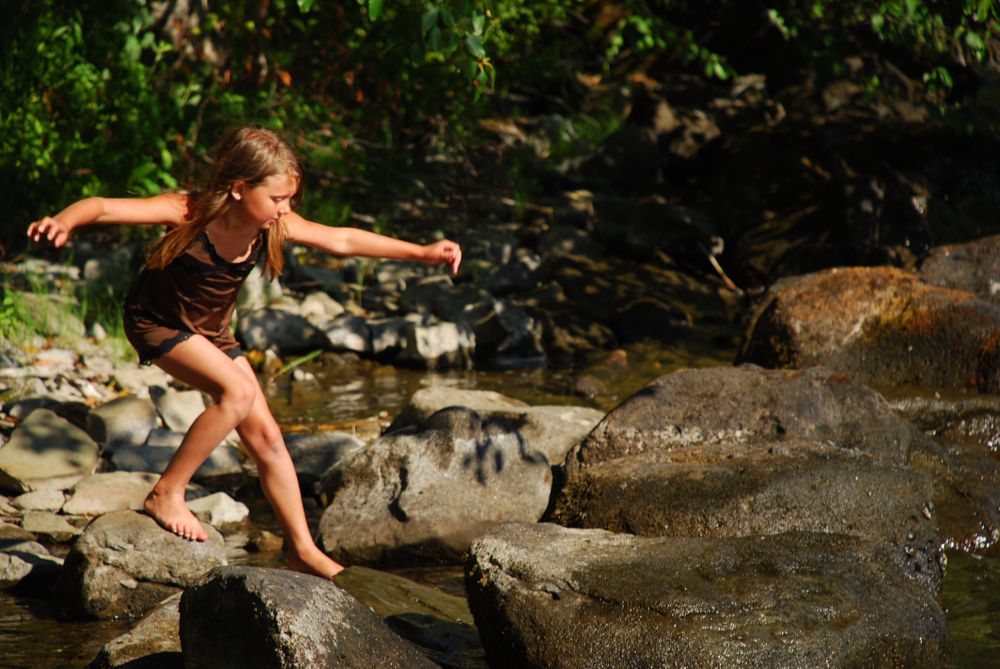Beginning again
 October 14, 2018
October 14, 2018 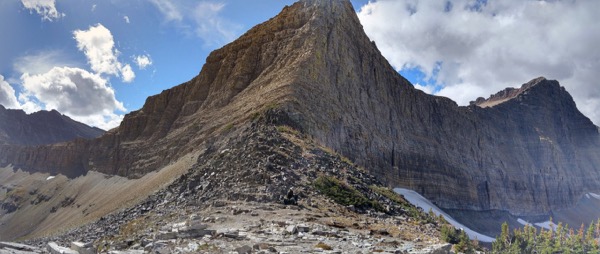
Triple Divide Peak, Glacier National Park
If I listen carefully I can feel a little shift inside when something is right for me. It is a kind of knowing that is hard to describe; there are no sounds or words or fireworks that go with it. It is actually kind of ordinary, a matter-of-fact feeling. I imagine it feels the way a compass would feel about north—if compasses had feelings.
This was the feeling I had when I heard about Triple Divide Peak in Glacier National Park. As soon as I read about it, I knew that it was important to me for some reason—and I knew that I wanted to go see it.
Triple Divide Peak is unique, not only in Glacier, but on the continent. As its name suggests, it is the intersection of three of the main North American watersheds. Simply put, a raindrop falling on the top of Triple Divide Peak would end up in the Pacific, Atlantic, or Arctic Ocean, depending on which face it fell on. Of course it is never that simple—specifically, there is some disagreement about whether the Hudson Bay drains to the Atlantic Ocean or the Arctic—but it was this metaphor that captured my attention.
We set aside our last day in Glacier for this hike, which would take us to the pass just below the peak. Starting from the deserted Cut Bank Campground, the walk up was uneventful, other than coming suddenly across the broad, slab-face of a big mama-moose browsing in the underbrush, and being amazed that such an enormous animal could melt so quickly into the forest and disappear. The trail to the peak was not a popular route. We didn't see another person all the way up to the divide, and once we arrived at the top, we were alone. This allowed me to take a good long look at the peak and to savor the sensations of being perched on the narrow ridge, imagining the connections that stretched from here all the way across the continent to those three far-away oceans.
Then after eating lunch we walked back down. Other than the welcome solitude and the mindfulness, I can’t say that I experienced any major revelations. It was a nice day and I was pleasantly tired at the end of it.
But somehow the image of the peak kept returning, as though it had a message for me, but one so subtle I couldn’t quite hear it. It wasn’t until I had rolled this experience around for several more weeks that I could begin to put its meaning into words.
Part of the metaphorical power of this place for me is that it points to our ability to begin again. I once attended a weekend workshop with meditation instructor Sharon Salzberg in which she spent the entire weekend focused on the idea of beginning again. Your mind has wandered away from your meditation? Begin again.You have made an error in judgment? Begin again. You have suffered a defeat? Begin again. And again now.
And now.
And now.
Her message, I think, is embodied in this peak. This peak is the physical equivalent of the mental practice of beginning again. So often a thought or a habit takes off and we are barreling down the slope to the Atlantic again. Or the Pacific. As long as we are in that thought, there is no turning back—the path ahead is inevitable. When we begin again we return to the top and to this larger perspective, to a place that includes all the oceans—and all the paths to them. From this place we have the ability to choose again and again which path we will take this time, to choose our attitude and our orientation.
This peak also feels like a metaphor for discernment. Discernment about the things that matter—things at the core of who we are—is a subtle activity with profound consequences. Just one step to one side or the other of this ridge sets us on a path which ends thousands of miles away from the others. A little deviation from our own integrity or values doesn’t seem like a big deal at first, but pretty soon we are so far away from ourselves it can feel impossible to get back on track.
The good news is that no matter where we have ended up, the peak is always there, and mentally or spiritually we can always begin again in any moment.
These are both useful ideas, but when I hold the image of the peak in my mind, there is a still deeper image, one which I can sense, but don’t quite understand—an intimation of a kind of awareness. I imagine a practice of actively balancing on this thin edge, not as a way to find the “right” direction, or the right answer, but as an answer in and of itself, an awareness that lies outside the realm of “answers” at all.
I have been practicing imagining being at this peak and noticing how this affects my thinking and behavior. I notice that I feel calmer when I do this, more disinterested, freer to respond to things authentically in the moment. There is a perspective here that is all-inclusive. From this place there are no wrong paths, no wrong ocean to end up in. If this peak leads everywhere, how would you determine that one place was any better or worse than another?
From here I can also feel how connected everything is. Those raindrops that start on this peak don’t stop someplace—they keep going, transforming all the while into creeks, rivers, rain, snow, plants, animals, people, and yes, even pee and poop. One thing turns into the next in an infinite chain. And this chain doesn’t end at those three oceans. Those oceans stretch across the globe to other continents. The water in those oceans rises up into the air as rain again. The oceans and the earth itself are pushed and pulled by the moon and the sun and the other planets in our solar system. And on and on… It is all connected, and my usual linear cause-and-effect thinking is a tiny fragment of those great cycles of activity.
And I can sense ever-so-faintly that even those great cycles are embedded in an infinity that I can’t even begin to imagine, the vast swathes of galaxies in the night sky giving just the barest hint of the actual stretch of reality.
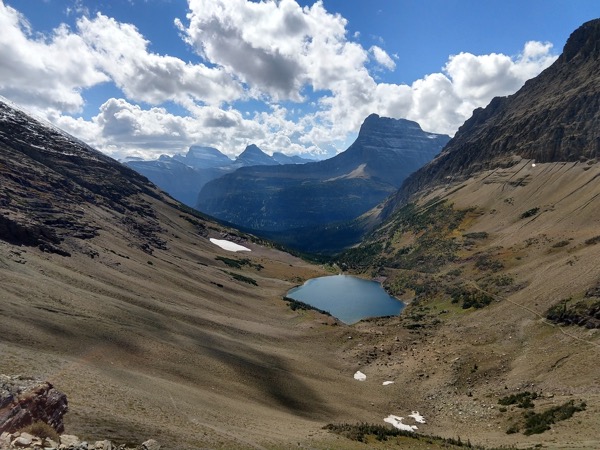
Back here on my imaginary seat on the rock at the top of the peak, my head is spinning and my imaginary butt is getting sore from sitting. I think I need to get up and stretch; eat something; see what the weather is. Our real-world perspective is always present and needs tending. But the image of the balance point helps me to live with more grace and ease in the midst of all the pulls toward one slope or another—helps me to see the bigger picture that my tiny world is part of.
And this ending reminds me of a Haiku I read last night by Claire Everett of North Yorkshire, England:
earth from space...
and here I am
dotting an i
********
So much has happened since I wrote last. We finished our trip up the east side of the Cascade Mountains this spring. We spent the summer on my family’s farm outside of Spokane, Washington. We passed the two-year mark of leaving our house in Seattle on September 7. And now we are traveling again, heading south for the winter via the Rocky Mountains. We started with a week in Glacier National Park and a little longer in Yellowstone (with stops in towns for work and supplies.) This just barely gave us a taste of those two great landscapes, but that taste was memorable. And we will definitely be back...
